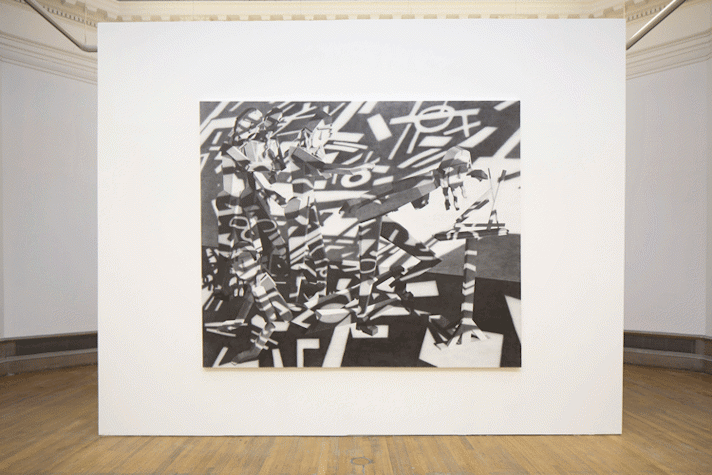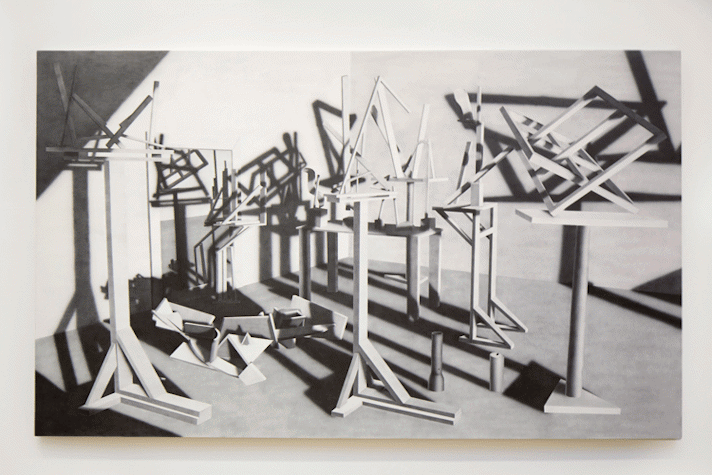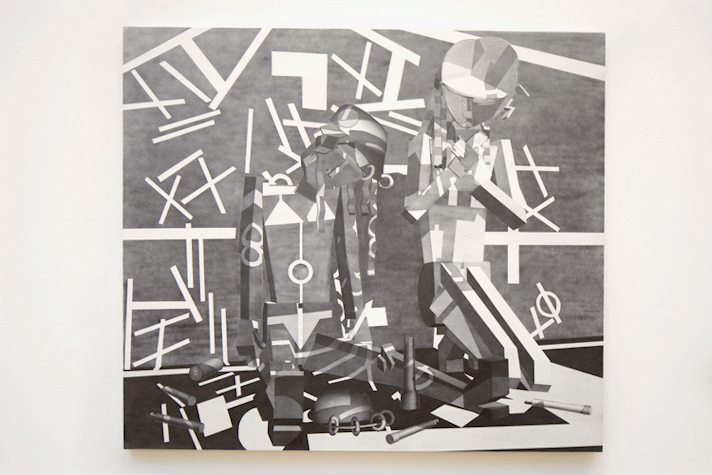McLellan Galleries
Singer’s paintings portray fictional tableaux of stylized figures occupying generalized spaces. At first glance, her characterizations adopt aspects of the aesthetic principles used by constructivists and cubists to represent volume and form. Contemporary media and everyday objects intermingle with these stylized conventions, producing glimpses of alternate timelines. The protagonists of these paintings are dancers and artists, seen in familiar poses and interactions in their studios or nightclubs.
Singer’s technique distances her work from the polemic political ideologies of early 20th century avant-garde movements, and grounds her more squarely in the present, and interestingly, the recent past. Initially, the works defy an easy reading of the methodology employed. Singer’s use of Sketch Up, a fairly recent and accessible 3D modelling software tool suggests a digital technique is used to produce the works, but upon closer examination, this process is more painstaking, and the paintings are made using masking and sprayed paint.
The reduction of figures to pure geometric forms bathed in studio light or the neon lights of the club – further distilled into monochrome, and the blankness of expression, instills a peculiar sense of humour into these dynamic scenes.
Commissioned by Glasgow International
Supported by Homecoming Scotland and Culture 2014




